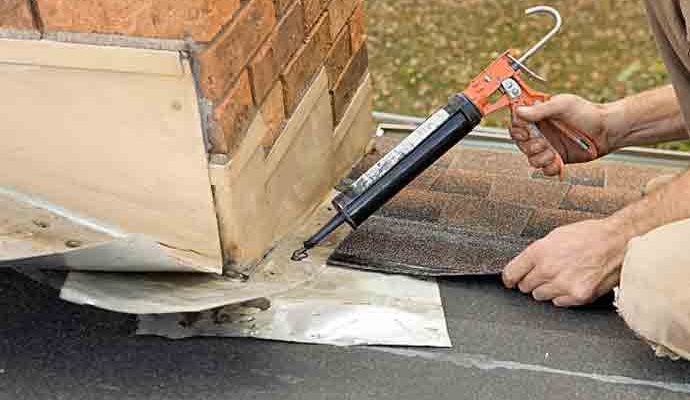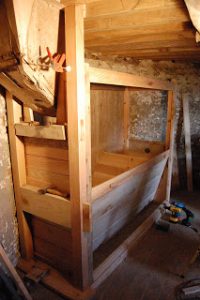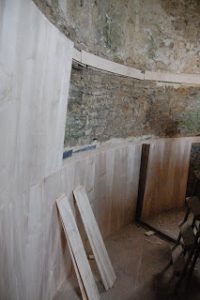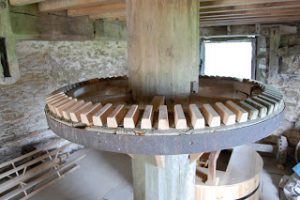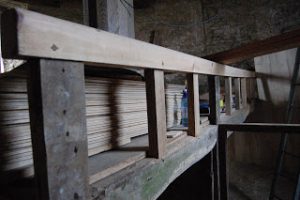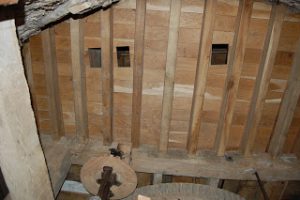Tips For Sealing Metal to Concrete
In addition to securing the best sealant for metal to concrete, you can also protect the concrete by using a sealant. The type of sealant you use will depend on the type of concrete. Regular concrete and stamped concrete require different sealants. The sealant forms a bond between the metal and concrete, which will protect the metal from corrosion. Most commonly, acrylic-latex caulk is used, which you can apply with a caulking gun.
Using Quikrete’s Backer Rods
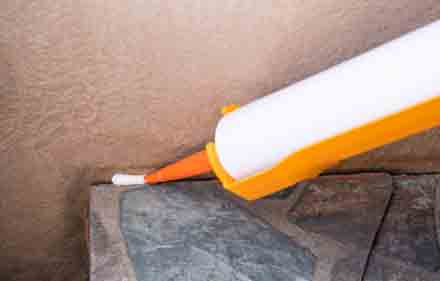
Using Quikrete’s Backer rods is an excellent way to seal gaps, cracks, and other types of joints. They are suitable for hot-pour applications, and can resist most solvents. They are also non-exuding. Depending on the type of sealant, Backer Rods may be used for either small or large joints.
Backer rods are commonly used in joints that are half an inch wide and deeper. The backing rod is a bit more durable and adheres to the surface better than quikrete. In addition, the latter is ideal for joints over 1/2 inch.
The backer rod is a compressible polypropylene/polyolefin foam that is easily inserted into clean joints before the sealant is applied. This material helps to achieve even depth, support the sealant, and prevent three-sided adhesion. It is particularly beneficial when using Self Leveling Expansion Joint Sealants (SLEJS). A large soft backer rod is also useful for sealing and filling gaps in general construction.
After removing the joint materials, it is essential to clean the area thoroughly. Clean the edges as well. Apply a coat of self-leveling sealant. This is important, as the sealant tends to run out of the joint edges. Using heavy masking tape to cover joints will also help prevent the sealant from running out of the joint.
Backer rods come in a variety of designs. Some are square or hexagon, while others are open cell. Their shape and design make them versatile for a variety of applications. When choosing a backer rod, be sure to choose one that suits the needs of your project. You’ll find detailed information on each one and where to buy it. There are many benefits to using backer rods.
Using acetone to remove surface contamination
The VOC content of the sealer must be under three thousand pounds per square inch (psi) or 20.7 MPa, which is the minimum required strength for a concrete surface. This level can be met with the use of acetone, mineral spirits, and xylene. Before installing the sealer on a concrete surface, it is important to remove all contaminants with an acetone-based solvent. If the sealer contains other ingredients, use mineral spirits or xylene to remove them. It is also recommended to carry out mockup installations before the final installation.
Acetone can be diluted up to one-third with water in order to remove surface contamination. It is important to note that industrial straight acetone should not be confused with nail polish remover. However, the chemical can be diluted and used to remove surface contamination from concrete.
Once you have removed surface contamination from the metal to concrete surface, it is time to apply the sealer. If you are using a water-based sealer, use a small amount of water to test the surface. Then, back roll the surface to remove excess material. Once the solvents have evaporated, the sealer will harden and become more durable.
You can also use acetone to remove paint or rust. Acetone is a solvent and has a flammable and volatile characteristic. The chemical is effective in removing paint and rust from metal surfaces. The liquid can also be used for general cleaning purposes, especially in cases where a solvent is necessary.
Using a food-safe wax to protect against acidic spills
Using a food-safe wax to seal metal to concrete is an excellent way to minimize the chances of acidic spills. While concrete is a highly alkaline substance, many foods are acidic. Exposure to acids can eat away at metal surfaces, leaving them unusable for a variety of purposes. Acidic substances can also bleach materials and etch porcelain enamel.
Choosing a quality sealer
When choosing a quality sealer for metal to concrete installations, it’s important to consider a number of factors. These factors include the anticipated conditions for the installation, the surface conditions, and the quality of the substrate. It’s also important to consider any unusual environmental issues, such as high humidity or ultraviolet light exposure.
The timing of the installation is also an important consideration. While some sealers can be applied in a matter of hours, other products require a week or more of cure time. Choosing a high-quality sealer is critical to ensuring a durable and long-lasting surface.
Besides the longevity of the coating, a quality concrete sealer must be applied to prevent moisture, dirt, and chemicals from damaging the surface. For this reason, it’s essential to choose a sealer made from premium material. However, a few factors are also critical to selecting a quality concrete sealer. Depending on the type of concrete, it may be a good idea to choose a penetrating sealer or an acrylic-based sealer. The latter is best suited for applications where the sealer must adhere to the surface.
A quality sealer for metal to concrete should be able to protect the concrete from moisture while preserving the finish. A well-applied sealer will help prevent stains and corrosion, and will protect the surface against rust, algae, and other harmful elements. In addition, a good sealer will protect concrete from the environment and make it easier to clean and maintain. It should also be breathable, so that excess moisture can escape.
When choosing a quality sealer, it’s important to consider its application method and the type of aggregate that will be used. A quality sealer should offer protection against chemicals, water, deicing salts, and other contaminants while providing a beautiful and durable finish.
Summary:
Concrete sealers come in many different types. The most common are acrylic, urethane, and silicone derivatives. There are also hybrid sealers, which are more expensive but offer different benefits. Another type of concrete sealer is a water-based sealer. This is a low-solid, high-build coating solution that is perfect for exterior and interior applications.
